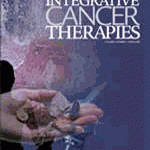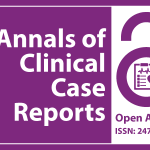Individualized Homeopathic Medicines as Adjunctive Treatment of Pediatric Epilepsy: A Double-Blind, Randomized, Placebo-Controlled Trial

Introduction - Epilepsy, one of the most common neurological diseases, contributes to 0.5% of the total disease burden. The burden is highest in sub-Saharan Africa, central Asia, central and Andean Latin America, and south-east Asia. Asian countries report an overall prevalence of 6/1,000 and that in India of 5.59/1,000. We examined whether individualized homeopathic medicines (IHMs) can produce a significantly different effect from placebos in treatment of pediatric epilepsy in the context of ongoing standard care (SC) using anti-epileptic drugs (AEDs). Methods – The study was a 6-month, double-blind, randomized, placebo-controlled trial (n = 60) conducted at the pediatric outpatient department of a homeopathic hospital in West Bengal, India. Patients were randomized to receive either IHMs plus SC (n = 30) or identical-looking placebos plus SC (n = 30). The primary outcome measure was the Hague Seizure Severity Scale (HASS); secondary outcomes were the Quality of Life in Childhood Epilepsy (QOLCE-16) and the Pediatric Quality of Life inventory (PedsQL) questionnaires; all were measured at baseline and after the 3rd and 6th month of intervention. The intention-to-treat sample was analyzed to detect group differences and effect sizes. Results - Recruitment and retention rates were 65.2% and 91.7% respectively. Although improvements were greater in the IHMs group than with placebos, with small to medium effect sizes, the inter-group differences were statistically non-significant – for HASS (F 1, 58 = 0.000, p = 1.000, two-way repeated measures analysis of variance), QOLCE-16 (F 1, 58 = 1.428, p = 0.237), PedsQL (2–4 years) (F 1, 8 = 0.685, p = 0.432) and PedsQL (5–18 years) (F 1, 47 = 0.000, p = 0.995). Calcarea carbonica, Ignatia amara, Natrum muriaticum and Phosphorus were the most frequently prescribed medicines. No serious adverse events were reported from either of the two groups. Conclusion - Improvements in the outcome measures were statistically non-significantly greater in the IHMs group than in the placebos group, with small effect sizes. A different trial design and prescribing approach might work better in future trials.







Lascia un commento
Devi essere connesso per inviare un commento.